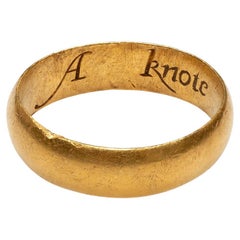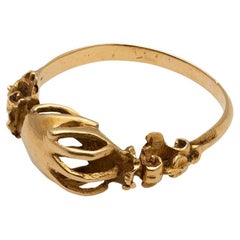Les Enluminures
Antique Late 17th Century English Band Rings
Gold, Yellow Gold
Antique 15th Century and Earlier European Classical Roman Signet Rings
Gold, Yellow Gold
Antique 19th Century French Gothic Revival Band Rings
Gold, Yellow Gold
Antique 16th Century European Renaissance Engagement Rings
Gold, Yellow Gold
Vintage 1910s German Band Rings
Gold, Mixed Metal
Vintage 1910s German Band Rings
Mixed Metal, Gold
Vintage 1910s German Band Rings
Gold, Mixed Metal
Antique 16th Century European Renaissance Signet Rings
Agate, Gold, Enamel
Antique 15th Century and Earlier English Medieval Signet Rings
Gold
Antique 17th Century European Renaissance Cocktail Rings
Onyx, Gold
Antique 16th Century German Figurines and Sculptures
Antique 1620s Spanish Renaissance Pendant Necklaces
Pearl, Gold, Enamel
Antique Early 1600s Italian Pendant Necklaces
Brass
Antique 16th Century Italian Brooches
Agate, Gold
Antique Early 19th Century English Georgian Cocktail Rings
Pearl, Rose Gold
Antique Early 1700s English Band Rings
Gold
Antique 16th Century European Renaissance Solitaire Rings
Rock Crystal, Gold
Antique 19th Century European Solitaire Rings
Rock Crystal, Quartz, Gold, Silver
Antique 17th Century English Band Rings
Gold
Antique 1880s English Revival Pendant Necklaces
Pearl, Gold, Enamel
Antique 1890s French Gothic Revival Cocktail Rings
Gold
Antique 15th Century and Earlier European Classical Roman Cocktail Rings
Gold
Antique 1890s English Renaissance Revival Drop Necklaces
Gold, Enamel
Antique 1890s French Gothic Revival Brooches
Opal, Silver
Antique 1890s French Renaissance Revival Brooches
Diamond, Gold, Silver, Enamel, 18k Gold
Antique 16th Century Renaissance Wedding Rings
Agate, Gold, Yellow Gold
Early 20th Century French Art Nouveau More Rings
Gold, Yellow Gold
Antique 17th Century English Band Rings
Gold, Yellow Gold
Early 20th Century French Art Nouveau Fashion Rings
Gold, Yellow Gold
Antique 16th Century Medieval Pendant Necklaces
Crystal, Rock Crystal, Gilt Metal
Antique 18th Century English Band Rings
Gold, Yellow Gold
Antique 17th Century English Band Rings
Gold, Yellow Gold
Antique 15th Century and Earlier Italian Classical Roman Band Rings
Onyx, Gold
Antique Early 18th Century English Band Rings
Gold
Antique 17th Century English Band Rings
Gold
Antique 16th Century Pendant Necklaces
Diamond, Pearl, Gold
Antique Early 17th Century Spanish Pendant Necklaces
Silver
Antique Mid-17th Century Pendant Necklaces
Gilt Metal
Antique 16th Century English Medieval Band Rings
Silver
Antique 16th Century Renaissance Fashion Rings
Gold
Antique 17th Century English Band Rings
Gold
Antique Late 17th Century Italian Renaissance More Rings
Agate, Gold
Vintage 1960s American Modernist Fashion Rings
Gold
Antique 15th Century and Earlier English Medieval Band Rings
Gold
Antique 17th Century Italian Baroque Cluster Rings
Rock Crystal, Gold
Antique 18th Century More Jewelry
Silver, Gilt Metal
Antique 16th Century Spanish More Objets d'Art and Vertu
Silver
Antique 16th Century Italian Renaissance More Jewelry
Onyx, Gold
Early 20th Century French Art Nouveau Fashion Rings
Diamond, White Diamond, Gold
Antique 17th Century English Band Rings
Gold
Antique 16th Century Renaissance Fashion Rings
Gold
Antique 17th Century English Band Rings
Gold
Antique Early 19th Century French More Rings
Crystal, Gold
Antique 15th Century and Earlier German Figurines and Sculptures
Silver, Gilt Metal
Antique Late 17th Century Pendant Necklaces
Crystal, Rock Crystal, Gold, Gold Plate, Silver
Antique 16th Century Italian Renaissance Engagement Rings
Gold
Antique Early 1900s Unknown Art Nouveau More Rings
Pearl, Gold
Antique Mid-18th Century English Band Rings
Gold
Antique Mid-18th Century Engagement Rings
Diamond, Ruby, Gold
Vintage 1980s Contemporary Fashion Rings
Gold, 18k Gold


